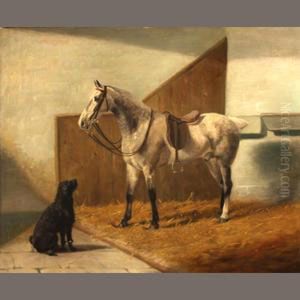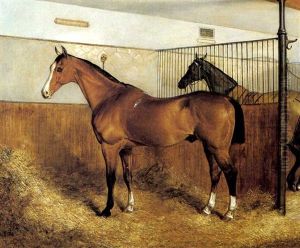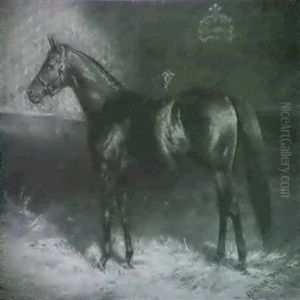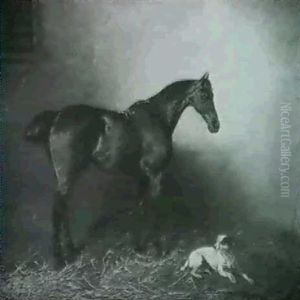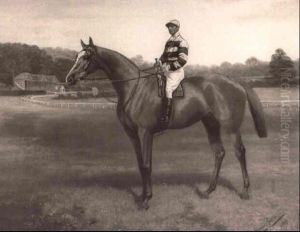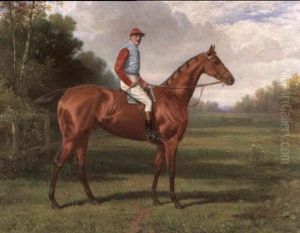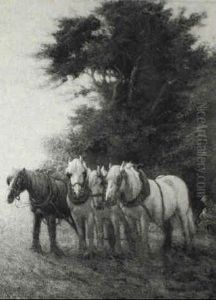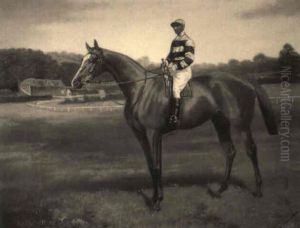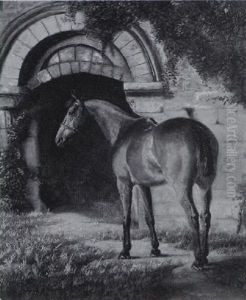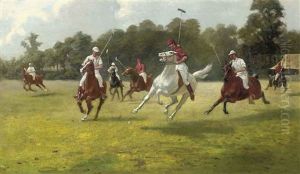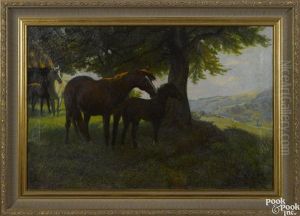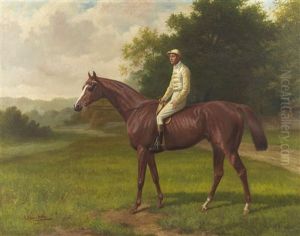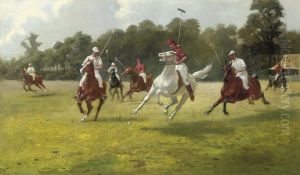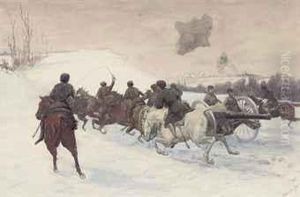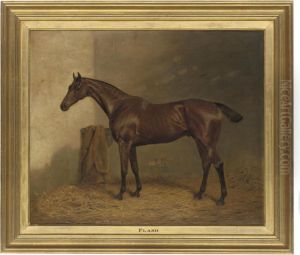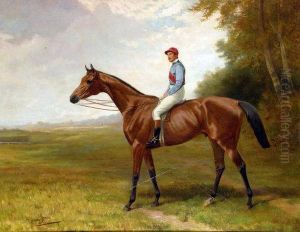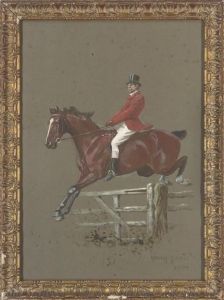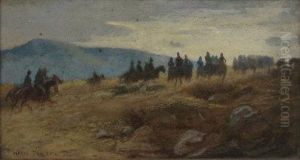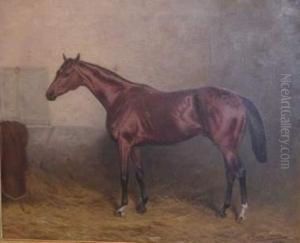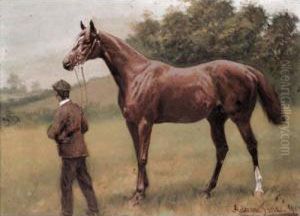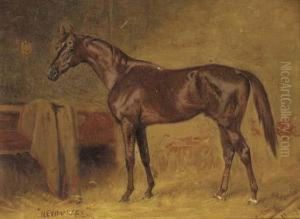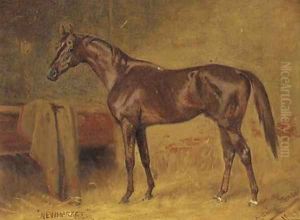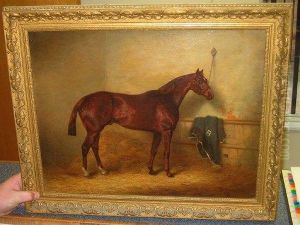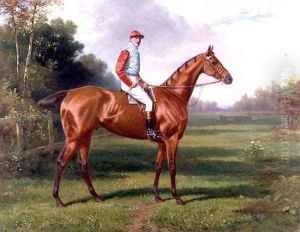Adrian Jones Paintings
Adrian Jones was an English sculptor and painter, known primarily for his equestrian statues and military subjects. Born on February 9, 1845, in Ludlow, Shropshire, he initially pursued a career in veterinary medicine after studying at the Royal Veterinary College, London. However, his true passion lay in the arts, particularly sculpture, which he turned to after serving as a veterinary officer in the British Army. Jones's military background profoundly influenced his artistic work, providing him with a deep understanding of horses and the nuances of their form and movement, which became a hallmark of his sculptures.
Jones is perhaps best remembered for his monumental work, 'Peace descending on the Quadriga of War,' which adorns the Wellington Arch in London. This magnificent sculpture was unveiled in 1912 and stands as a testament to his skill in capturing the majesty and dynamism of horses. The piece, which symbolizes peace reigning over war, showcases Jones's ability to convey complex themes through his art.
Throughout his career, Adrian Jones created several notable public monuments and memorials, many of which pay tribute to military figures and events. His approach to sculpture was characterized by a commitment to realism and a keen eye for detail, attributes that earned him considerable acclaim during his lifetime.
Despite his achievements and contributions to British sculpture, Adrian Jones was not widely known in the broader art world, and his work received limited scholarly attention until more recent years. His legacy, however, lives on through his public sculptures, which continue to be admired for their technical excellence and emotive power.
Adrian Jones passed away on January 24, 1938. Today, he is recognized as one of the late Victorian era's leading equestrian sculptors, and his work remains an important part of the UK's artistic and cultural heritage.
